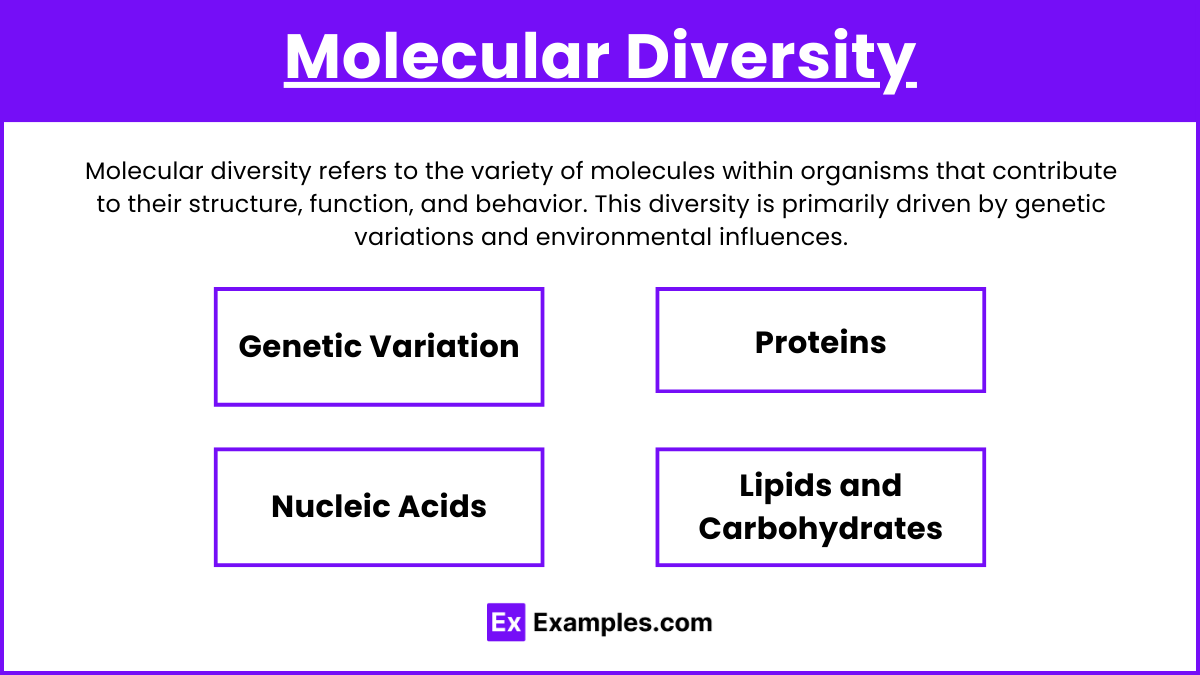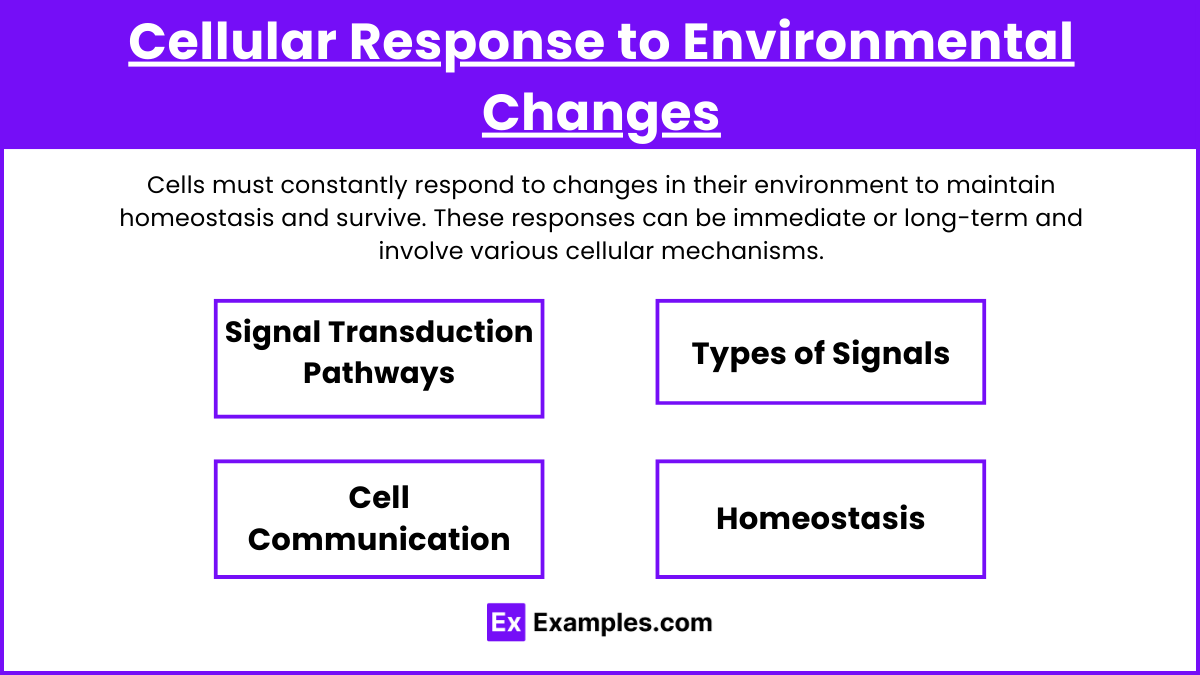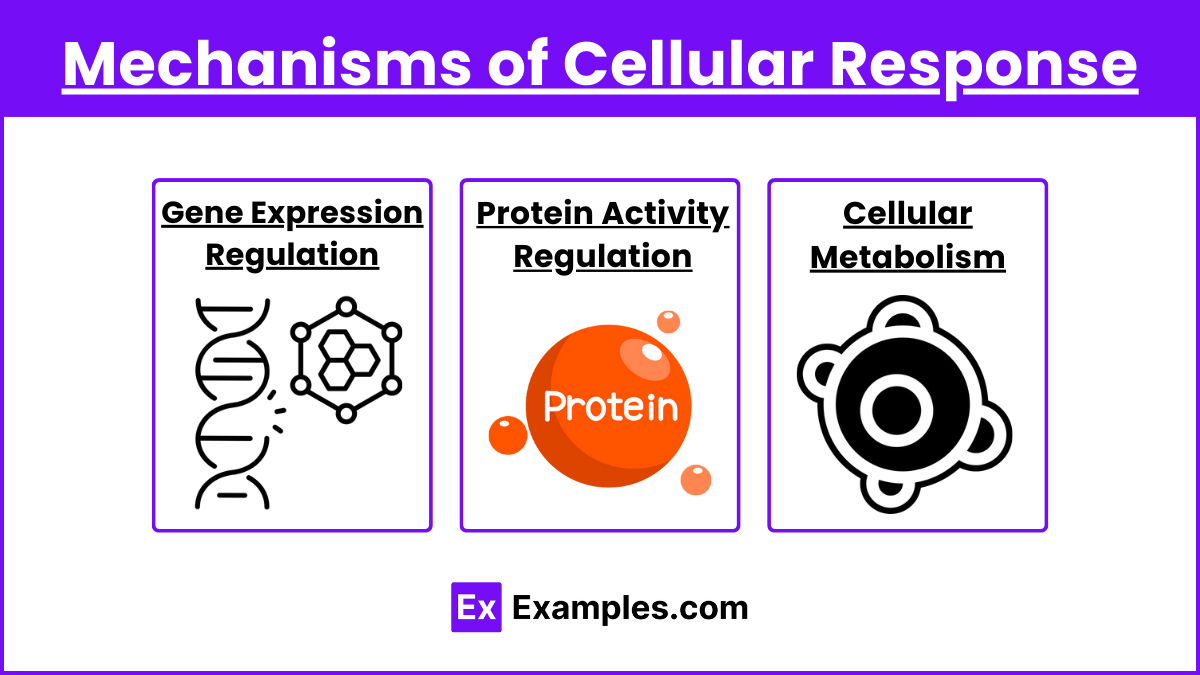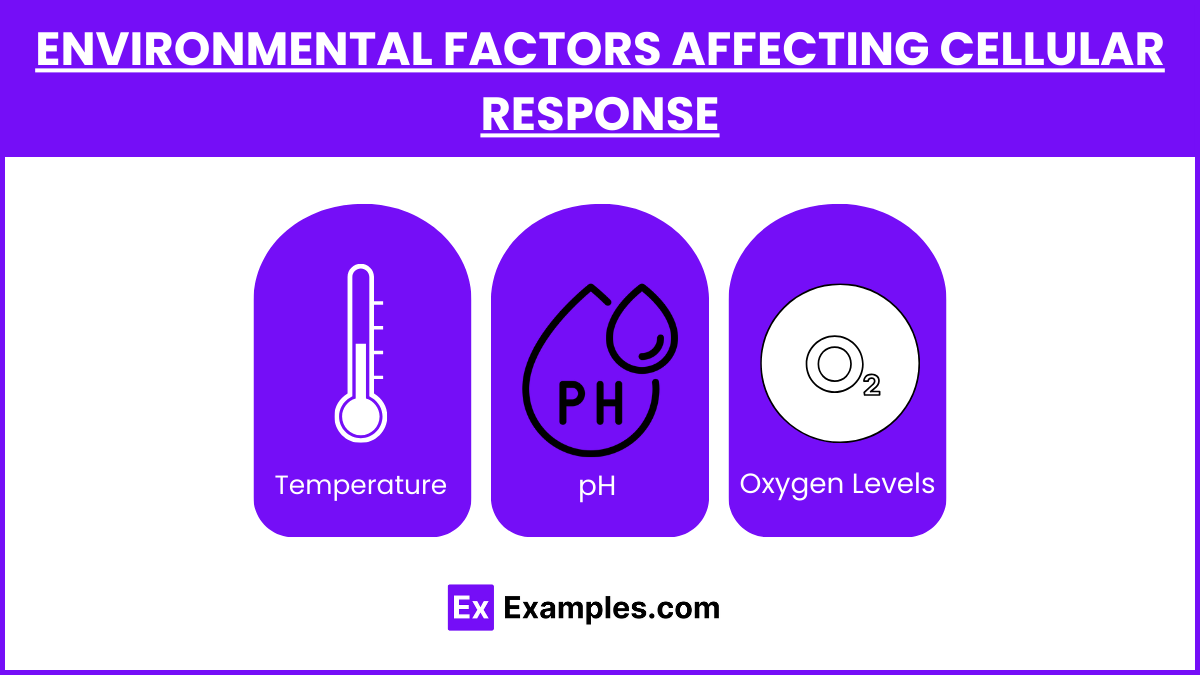In AP Biology, understanding molecular diversity and cellular response to environmental changes is essential. The cell is the basic unit of life, as emphasized by the cell theory, which states that all living organisms are composed of cells and that all cells arise from pre-existing cells. Molecular diversity within and among cells allows for varied responses to environmental changes, ensuring survival and adaptation through mechanisms like gene expression regulation and metabolic adjustments.
Learning Objectives
In studying Molecular Diversity and Cellular Response to Environmental Changes in AP Biology, students should achieve the following learning objectives: Understand how DNA variations drive molecular diversity, recognize the role of organic compounds in cellular functions, and identify how cells, particularly the nucleus and ribosomes, respond to environmental stimuli. Additionally, explore the connections between molecular diversity and ecology, focusing on how these cellular responses contribute to organismal adaptation and survival in different ecological contexts.
Molecular Diversity

Molecular diversity refers to the variety of molecules within organisms that contribute to their structure, function, and behavior. This diversity is primarily driven by genetic variations and environmental influences.
Key Concepts
- Genetic Variation:
- Mutations: Changes in DNA sequences that can lead to new traits.
- Gene Duplication: Copies of genes that can evolve new functions.
- Sexual Reproduction: Combines genes from two parents, increasing genetic diversity.
- Horizontal Gene Transfer: Transfer of genes between organisms, common in bacteria.
- Proteins:
- Structure: Proteins have primary, secondary, tertiary, and quaternary structures that determine their function.
- Function: Enzymes, structural proteins, signaling molecules, and transport proteins.
- Nucleic Acids:
- DNA and RNA: Carry genetic information and play roles in gene expression.
- Variability: Different sequences and structures of nucleic acids contribute to molecular diversity.
- Lipids and Carbohydrates:
- Lipids: Membrane structure, energy storage, signaling.
- Carbohydrates: Energy sources, structural components, cell recognition.
Importance of Molecular Diversity
- Adaptation: Enables organisms to adapt to changing environments.
- Evolution: Drives natural selection and evolutionary processes.
- Functionality: Different molecules perform various functions necessary for life.
Cellular Response to Environmental Changes

Cells must constantly respond to changes in their environment to maintain homeostasis and survive. These responses can be immediate or long-term and involve various cellular mechanisms.
Key Concepts
- Signal Transduction Pathways:
- Reception: Detection of a signal molecule (ligand) by a receptor.
- Transduction: Series of steps that convert the signal into a cellular response.
- Response: Activation of cellular processes (e.g., gene expression, enzyme activity).
- Types of Signals:
- Chemical Signals: Hormones, neurotransmitters, and growth factors.
- Physical Signals: Light, temperature, and pressure.
- Cell Communication:
- Direct Contact: Gap junctions in animal cells and plasmodesmata in plant cells.
- Paracrine Signaling: Local signaling between nearby cells.
- Endocrine Signaling: Long-distance signaling via the bloodstream.
- Homeostasis:
- Feedback Mechanisms: Negative and positive feedback loops maintain internal balance.
- Examples: Regulation of blood glucose levels, body temperature, and pH.
Mechanisms of Cellular Response

- Gene Expression Regulation:
- Transcription Factors: Proteins that regulate the transcription of genes.
- Epigenetic Modifications: Changes in DNA or histones that affect gene expression without altering the DNA sequence.
- Protein Activity Regulation:
- Phosphorylation: Addition of phosphate groups to activate or deactivate proteins.
- Allosteric Regulation: Binding of molecules to sites other than the active site to modulate enzyme activity.
- Cellular Metabolism:
- Metabolic Pathways: Series of chemical reactions within a cell.
- Adaptation: Cells can alter metabolic pathways in response to changes in nutrient availability.
Environmental Factors Affecting Cellular Response

- Temperature:
- Heat Shock Proteins: Help protect proteins from denaturing.
- Membrane Fluidity: Adjustments in lipid composition to maintain membrane integrity.
- pH:
- Buffer Systems: Maintain stable pH levels in cells.
- Enzyme Activity: pH can affect the shape and function of enzymes.
- Oxygen Levels:
- Hypoxia Response: Activation of genes that help cells survive low oxygen conditions.
- Reactive Oxygen Species (ROS): Can cause damage; cells have mechanisms to neutralize ROS.


